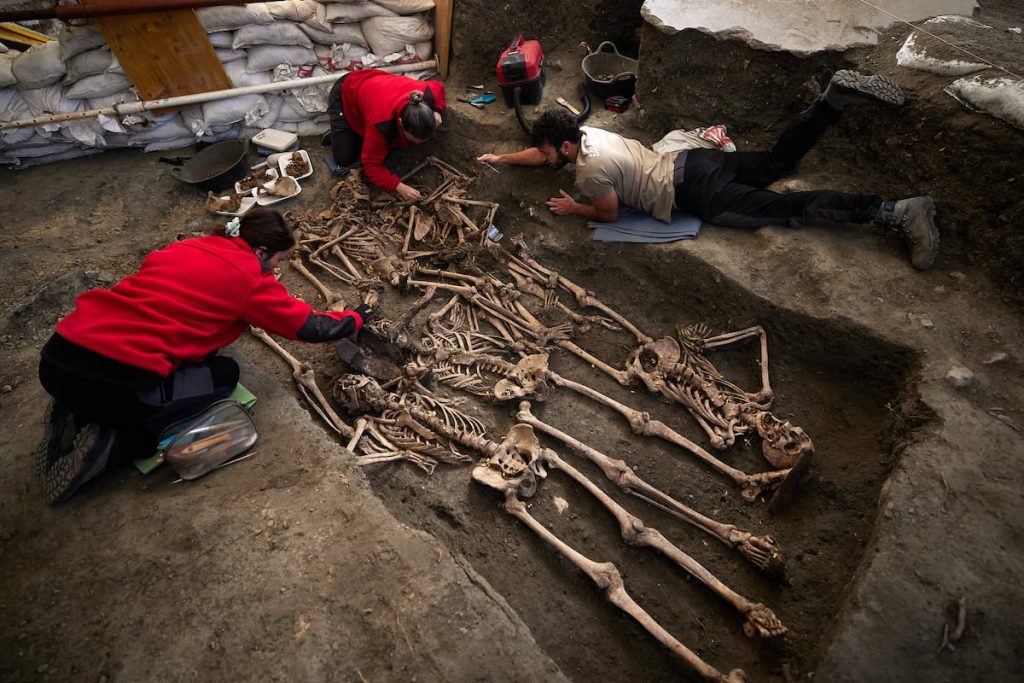The Víznar ravine in Granada is now a Place of Democratic Memory because in 1936 and subsequent years it was a place of infamy and murder. Members of the Falange, the Assault Guard, and the Black Squads -volunteer murderers- executed several hundred people there without any humanity. But even within this lack of humanity, there are scales, and its maximum expression has emerged this week in mass grave 17, where 10 people have been found shot in the back with their hands tied behind them. This is a unique situation in Víznar, where with 124 people found in 17 open graves, this is the first case of a group murdered with all victims bound.
The director of the investigation, Professor Francisco Carrión, does not have a confirmed reason why this specific group was bound. In 2021, during the first campaign, another person was found tied with an electrical cable in a grave with 13 victims. For now, only speculation can be made that the killers “may have been afraid that they would escape or jump”, Carrión says. The way they were shot fits the usual pattern: they were shot in the back, as shown by the clean entrance holes and more shattered exit wounds. On the morning that a team of researchers from the University and Memory project at the University of Granada is working on the last body in grave 17, the disrespect of the killers is immense but fits in a very small space.
The bodies have been found in a hole measuring 2.20 by just under 1.50 meters. Just over three square meters where alongside immense horror, there is a perception, or rather a desire to perceive, the dignity in the executed. The lack of humanity of the murderers was partly compensated by the gravediggers, a team of eight masons who were responsible for the burials. These 10 victims were laid in grave 17 with three of them side by side and the remaining seven on top of each other. The researchers are working meticulously and patiently to recover the dignity of the victims from this horrific scene.
The three researchers work on the second excavation in a corner of the grave where the bodies are superimposed. Through delicate work, they gather every bone with utmost respect until each individual is identified. Once the bodies are exhumed, their DNA will be extracted for matching with relatives of the missing, who have given their samples in hopes of finding answers. Families continue to arrive at the site, desperate for closure and closure to their loved ones who were executed and thrown into the ravine.
The team of Francisco Carrión continues their fourth campaign, likely to be the penultimate, aiming to uncover around 200 victims. The work of the University and Memory group extends to the Barranco del Carrizo in Órgiva, in the Granada Alpujarra. With the known narrative and early prospecting showing three possible burial sites, the excavations ahead are expected to be equally challenging and grim. The project aims to bring closure and dignity to the victims of the atrocities committed during the Civil War, ensuring that their stories are remembered and respected.


